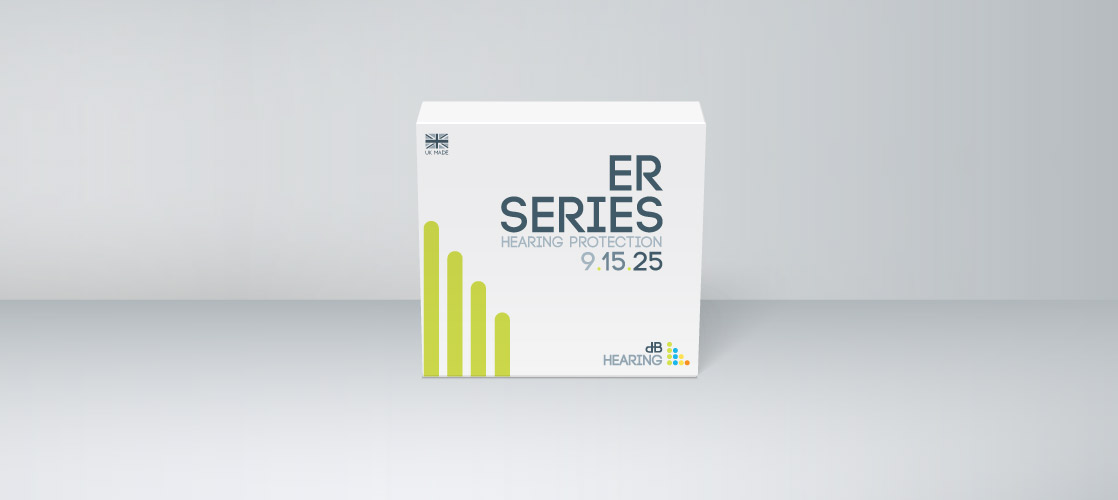While increasing numbers of professional musicians recognise the need to protect themselves from hearing damage when playing, not all of them act to do so. The risk to musicians’ hearing is real, but for many, this fails to translate into action.
There are two main things to consider here:
- what affects musicians’ hearing; and
- whether they are doing anything about it.
At dB Hearing we’ve developed our ER Series hearing protection custom earplugs with musicians in mind, and we think it’s important for anyone involved with music to be aware of what’s at stake.
How Hearing Damage Happens
The human ear is a mini-miracle of engineering. Sound passes through various parts of the ear towards the nerve endings that carries it to the brain, which then makes sense of it all.
It starts with variations in air pressure coming down through the ear canal to the ear drum, which then vibrates and transmits these vibrations to the middle ear. Three bones there then work mechanically to transmit the vibrations to the inner ear, while also protecting it by limiting the strength of the sound waves, if they seem too intense.
Once the sound wave hits the inner ear, it goes through the cochlea, a fluid-filled tube, to disturb the nerve endings, known as cilia. These transmit this disturbance to the brain, through auditory nerves. Which is how we hear.
When the cilia become damaged from exposure to loud sounds, they can no longer respond to sound waves.
This can show up as either:
- a temporary threshold shift; or
- a permanent threshold shift.
The ear can recover from a temporary threshold shift, but a permanent threshold shift means there has been some degree of irrevocable hearing loss, and increasing the risk of eventual deafness.
Symptoms of Hearing Damage
Ringing in your ears, tinnitus, indicates a loss of sensitivity. It may be subtle enough to be hardly noticeable – unless the background noise levels are unusually quiet – but it is a loss none the less.
A loss of clarity and illegibility, however, is not something a professional musician needs, when you consider that hearing is an essential part of their livelihood.
With a temporary threshold shift, the symptoms will go away after a day or so, but when it’s permanent, this kind of damage can end up being debilitating. If exposure to loud sound levels continues – and for musicians it’s likely to – the symptoms such as tinnitus can become severe.
There is no definitive cure.
Musicians at Risk
Many musicians may encounter the typical hazards of playing on the road such as hostile or indifferent audiences, fatigue, long periods of travel disturbing sleep patterns and such like. But the most persistent hazard they face is hearing damage.
Consider the standard band’s rhythm section of drummer and bassist. Drummers are especially at risk, from both the strong impact from things like cymbals and snares, mounted at ear level; to exposure from other musicians’ amplifiers on stage.
Similarly, bass players are often positioned very near to drummers, so are at risk from exposure to the loud volumes generated.
In fact, a bassist may habitually stand in a position where one ear has a far greater exposure than the other.
However, everyone involved is potentially at risk, from musicians to sound technicians.
Preserve and Protect
Musicians make their living with their ears. They spend hours in practice, and performing, listening and playing.
Therefore, it makes sense for them to protect this, their chief asset. The issue, though, is how to do this without compromising their abilities.
Often, musicians can hear things other people can’t, and have better auditory perception. What they then need is something that preserves this perception but protects their hearing through noise reduction.
The ER Series high fidelity custom earplugs are designed to offer excellent audio fidelity while reducing sound levels.
Normally, the ear canal has an acoustic resonant peak of around 17 dB at 2700 Hz. Musicians may be reluctant to put an earplug in if it then muffles this resonance.
Hi fidelity earplugs, however, that are custom-made to fit the individual ear, allow for flat, smooth attenuation, preserving the detail while protecting hearing.
Time to Act
“It’s time for musicians to act. Custom earplugs can offer the right level of protection from hearing damage while not impeding a musician’s ability to hear sound at the required level to perform at their best.
“Hearing damage can be permanent. Once it’s gone, it’s gone. Why risk your livelihood when there is an alternative?”
Paul Thorpe, Laboratory Manager, dB Hearing



